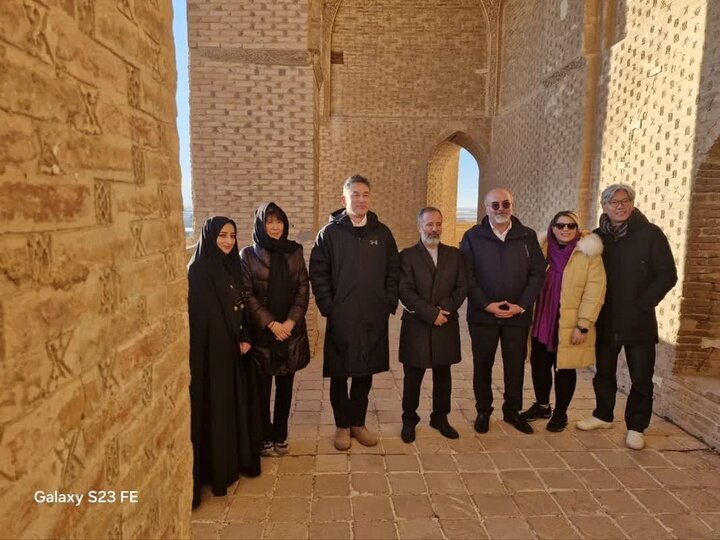Japan’s ambassador visits UNESCO-registered Dome of Soltanieh

TEHRAN - The Japanese ambassador to Iran, Tamaki Tsukada, recently toured the Dome of Soltanieh, a UNESCO World Heritage site renowned as one of the largest brick domes in the world.
Dariush Naderi, the tourism chief of Zanjan province where the iconic structure is located in, shared details of the visit, noting Ambassador Tsukada’s awe at the grandeur and extraordinary architecture of the historical site.
“The ambassador’s visit to this remarkable monument underscores its global significance and could help attract more international tourists to Zanjan,” CHTN quoted Naderi as saying on Thursday.
During his visit, Tsukada expressed admiration for Iran’s rich cultural heritage. “I hope more tourists will travel to Iran, as the country possesses a wealth of valuable historical treasures,” the envoy said.
The ambassador explored various sections of the Dome of Soltanieh, engaging with experts to gain deeper insights into the history and cultural significance of the site.
The monument is where Mohammad Khodabandeh better known as Oljaitu, the eighth Ilkhanid dynasty ruler from 1304 to 1316, is laid to rest. The mausoleum is highly recognized as an architectural masterpiece particularly due to its innovative double-shelled dome and elaborate interior decoration. The very imposing dome stands about 50 meters tall from its base.
According to UNESCO, the Mausoleum of Oljaitu is an essential link and key monument in the development of Islamic architecture in central and western Asia. Here, the Ilkhanids further developed ideas that had been advanced during the classical Seljuk phase (11th to early 13th centuries), during which the arts of Iran gained distinction in the Islamic world, thereby setting the stage for the Timurid period (late 14th to 15th centuries), one of the most brilliant periods in Islamic art.
Meaning “Town of the Sultans”, Soltanieh was briefly the capital of Persia’s Ilkhanid dynasty (a branch of the Mongol dynasty) during the 14th century.
AM
Leave a Comment